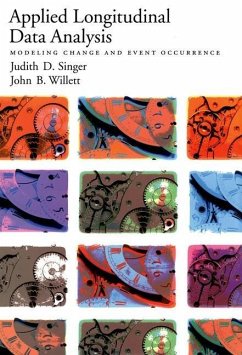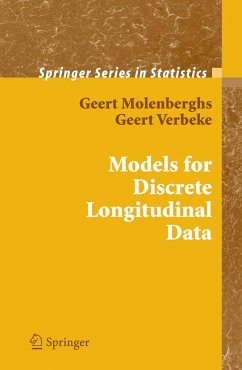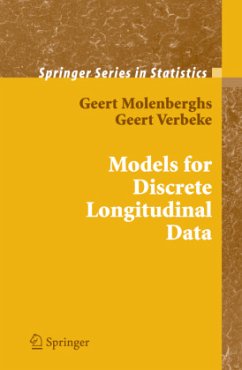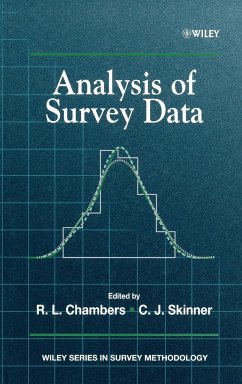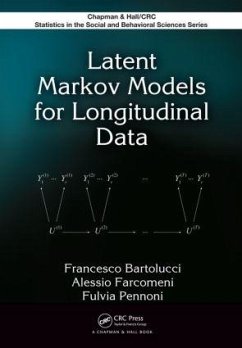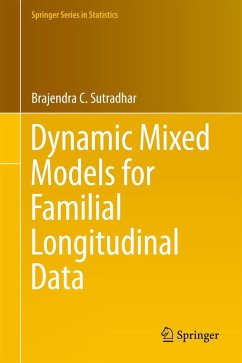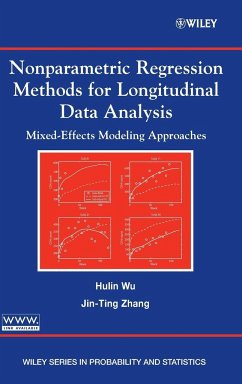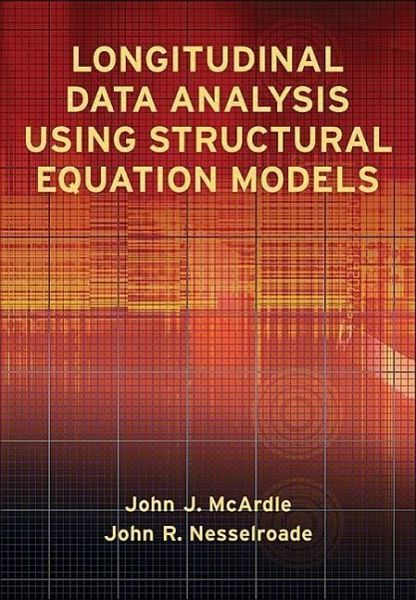
Longitudinal Data Analysis Using Structural Equation Models
Versandkostenfrei!
Versandfertig in über 4 Wochen

PAYBACK Punkte
45 °P sammeln!




The authors identify five basic purposes of longitudinal structural equation modeling. For each purpose, they present the most useful strategies and models. Two important but underused approaches are emphasized: multiple factorial invariance over time and latent change scores.
John J. (Jack) McArdle, PhD, is senior professor of psychology at the University of Southern California (USC), where he heads the Quantitative Methods Area and has been chair of the USC Research Committee. He received a BA from Franklin amp amp Marshall College ( 973 Lancaster, PA) and both MA and PhD degrees from Hofstra University ( 975, 977 Hempstead, NY). He now teaches classes in psychometrics, multivariate analysis, longitudinal data analysis, exploratory data mining, and structural equation modeling at USC. His research was initially focused on traditional repeated measures analyses and moved toward age-sensitive methods for psychological and educational measurement and longitudinal data analysis, including publications in factor analysis, growth curve analysis, and dynamic modeling of abilities. Dr. McArdle is a fellow of the American Association for the Advancement of Science (AAAS). He served as president of the Society of Multivariate Experimental Psychology (SMEP, 992 amp ndash 993) and the Federation of Behavioral, Cognitive, and Social Sciences ( 99 amp ndash 999). A few other honors include the 987 R. B. Cattell Award for Distinguished Multivariate Research from SMEP. Dr. McArdle was recently awarded an National Institutes of Health-MERIT grant from the National Institute on Aging for his work, amp quot Longitudinal and Adaptive Testing of Adult Cognition amp quot (2 5 amp ndash 2 5), where he is working on new adaptive tests procedures to measure higher order cognition as a part of large-scale surveys (e.g. the Human Resources Services). Working with APA, he has created and led the Advanced Training Institute on Longitudinal Structural Equation Modeling (2 amp ndash 2 2), and he also teaches a newer one, Exploratory Data Mining (2 9 amp ndash 2 4). John R. Nesselroade, PhD, earned his BS degree in mathematics (Marietta College, Marietta, OH, 9 ) and MA and PhD degrees in psychology (University of Illinois at Urbana amp ndash Champaign, 9 5, 9 7). Prior to moving to the University of Virginia in 99 , Dr. Nesselroade spent 5 years at West Virginia University and 9 years at The Pennsylvania State University. He has been a frequent visiting scientist at the Max Planck Institute for Human Development, Berlin. He is a past-president of APA's Division 2 (Adult Development and Aging [ 982 amp ndash 983]) and of SMEP ( 999 amp ndash 2 ). Dr. Nesselroade is a fellow of the AAAS, the APA, the Association for Psychological Science, and the Gerontological Society of America. Other honors include the R. B. Cattell Award for Distinguished Multivariate Research and the S. B. Sells Award for Distinguished Lifetime Achievement from SMEP. Dr. Nesselroade has also won the Gerontological Society of America's Robert F. Kleemeier Award. In 2 , he received an Honorary Doctorate from Berlin's Humboldt University. He is currently working on the further integration of individual level analyses into mainstream behavioral research. The two authors have worked together in enjoyable collaborations for more than 25 years.
Produktdetails
- Verlag: American Psychological Association (APA)
- Seitenzahl: 426
- Erscheinungstermin: 16. Juni 2014
- Englisch
- Abmessung: 261mm x 182mm x 27mm
- Gewicht: 937g
- ISBN-13: 9781433817151
- ISBN-10: 1433817152
- Artikelnr.: 40454647
Herstellerkennzeichnung
Libri GmbH
Europaallee 1
36244 Bad Hersfeld
gpsr@libri.de
Für dieses Produkt wurde noch keine Bewertung abgegeben. Wir würden uns sehr freuen, wenn du die erste Bewertung schreibst!
Eine Bewertung schreiben
Eine Bewertung schreiben
Andere Kunden interessierten sich für


